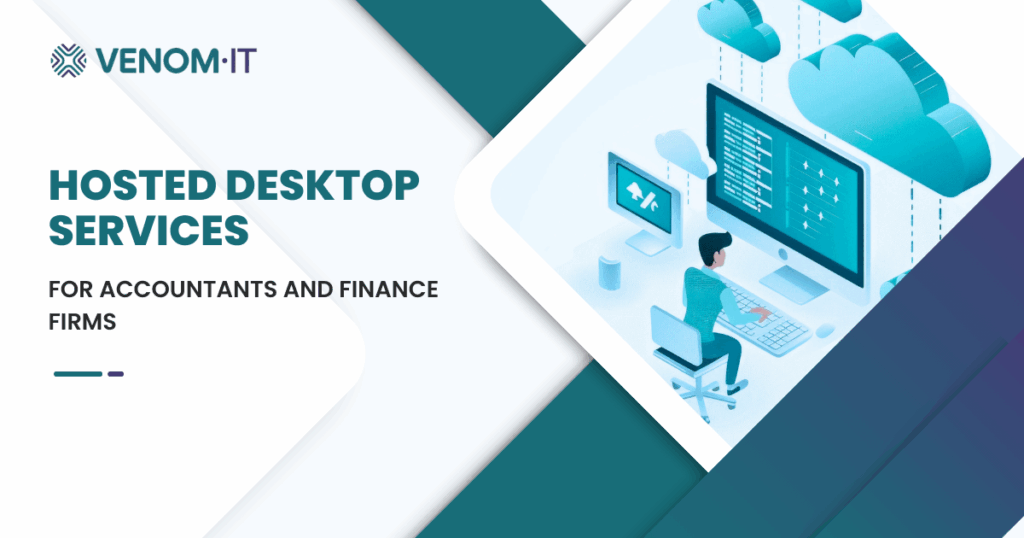What are Cloud Solutions?
Cloud solutions allow small businesses to scale efficiently, without worrying about the cost or complexities of physical servers and on-site infrastructure.
They’re designed to reduce overheads, boost productivity, and offer enterprise-grade security for your data—all while giving your team the flexibility to work from anywhere.
Bespoke cloud packages for SMEs across the UK
At Venom IT, we deliver tailored cloud hosting services, including VoIP, application hosting, virtual desktops, DBaaS, and more. As a Microsoft Silver Partner, we’re trusted to manage and optimise leading solutions like Microsoft 365, Veeam, OwnCloud, and Teams for Business.
Whether you’re just starting your cloud journey or looking to expand, our experienced technicians will help implement, manage, and support the right infrastructure for your business needs, with trusted expertise every step of the way.
Our Cloud Services

Futureproof your business phone systems with our VoIP technology services. We help SMEs with business telephony, providing solutions across Manchester and nationwide.

Safeguard your web and mobile apps behind a highly secure cloud hosted environment. Our reliable and high performing storage space sets the best foundations for better team productivity. Put your hosting requirements together with Venom IT app hosting.
Cloud Solutions for Business
Proud Microsoft 365 Partner
Venom IT is proud to be an official Microsoft 365 partner, the gold standard for cloud-based business solutions. Microsoft 365 empowers businesses by offering familiar, trusted applications like Outlook, Word, Excel, and PowerPoint, enhanced by the seamless connectivity, collaboration, and security of the cloud.
With Microsoft 365, your team can enjoy true collaboration from anywhere, on any connected device, accessing real-time updates, secure cloud storage with OneDrive, and automatic app updates without downtime or licensing hassles.
Venom IT takes your business productivity to the next level by securely hosting your data within our military-grade data centres, ensuring unmatched protection and reliability.
Cloud Solutions Made Easy.
1. Consultation
We’ll schedule a call or face-to-face meeting to learn what you need, your current setup, and any challenges you’re currently struggling with.
2. Tailored proposal
After discussions, we create a bespoke proposal tailored to your exact needs, and can also provide a full technical audit if required.
3. Onboarding & setup
Once signed-off, our technical team begins setup, migration and integration, with clear timelines and minimal disruptions. We estimate approximately 4 weeks from project to go live.
4. Ongoing support
After setup, you’ll be assigned a dedicated account manager who’ll proactively monitor and check in with you regularly.
Why Work With Us?
Cloud Solutions for Business
Prepare for the IDSN Switch Off
The ISDN switch off in 2027 (previously 2025 but has since been delayed) means that going forward, the default technology will be VoIP for businesses and households alike. It’s important to be ready to embrace change and futureproof your business phone systems ahead of time.
Cloud Solutions Frequently Asked Questions
-
What is a cloud-based server?
A cloud-based server is a virtual server hosted in a secure data centre, which can be accessed from anywhere, provided you have an internet connection. It offers the same benefits as a physical server, without having to worry about managing it yourself.
It offers the same functionality as a traditional physical server, without the need for on-site hardware. This allows for greater scalability, flexibility, and cost-efficiency.
-
Are cloud solutions suitable for small businesses?
Cloud solutions are ideal for any business looking to reduce IT costs, enable remote work, improve data security, or scale its operations. Regardless of your business size, they allow you to stay agile and competitive in today’s digital landscape.
-
How secure are our servers?
Our servers are hosted in Tier 2 and Tier 3 (military-grade) data centres, with enterprise-level encryption and multiple layers of security. We’re ISO 9001, 27001, and 27017 accredited, ensuring your data is protected to the highest industry standards.
Latest News


9 min read


8 min read


4 min read
Contact us
Support 0161 358 1060
Sales 0330 202 0220




